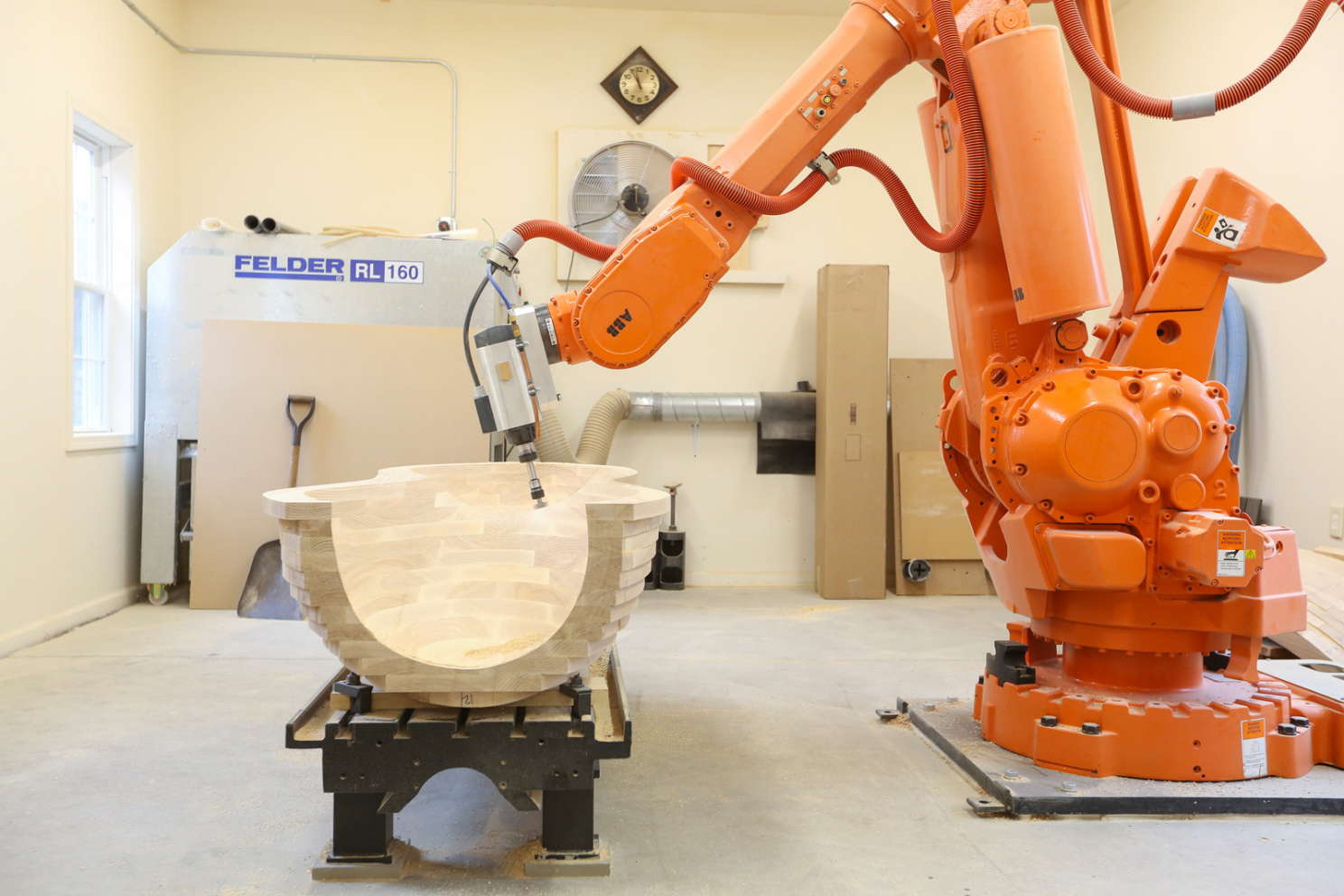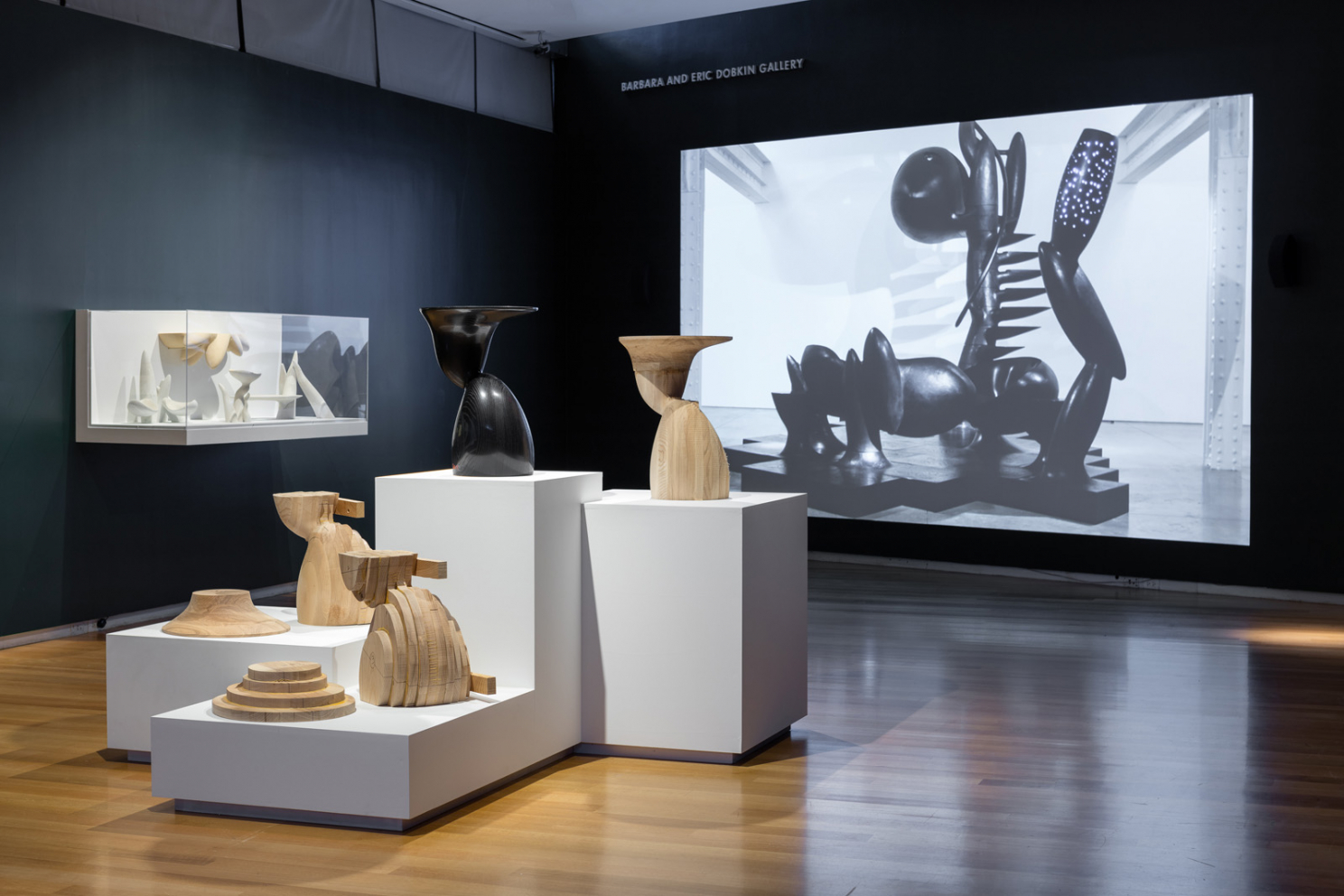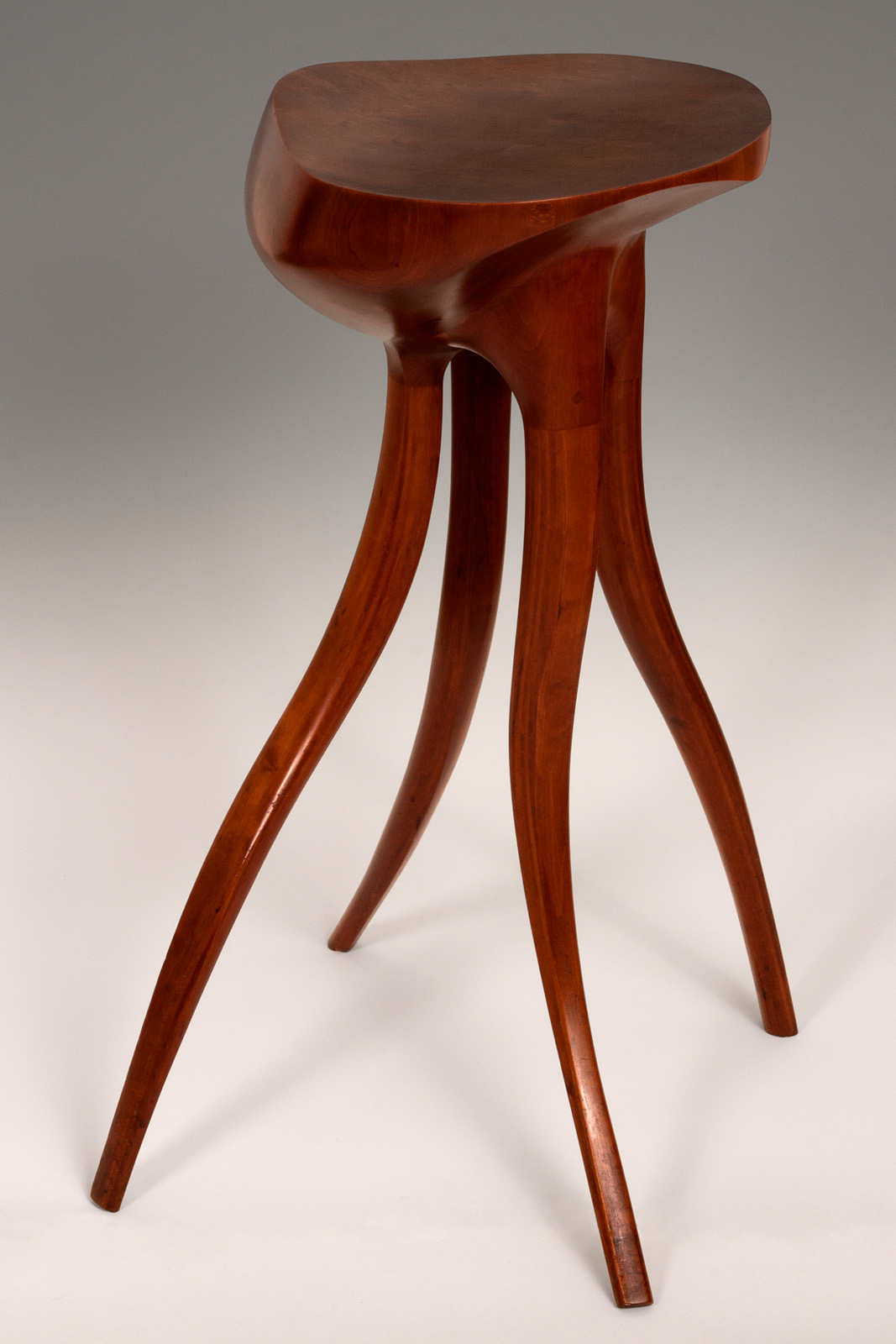In Memoriam: Wendell Castle (1932–2018)


A review of Wendell Castle’s six-decade-long career reveals two undeniable truths: he was a pioneer and an innovator. Long heralded as the father of American studio furniture, Castle traversed a myriad of styles and techniques, continuously challenging himself as an artist, reinventing the meaning of furniture along the way. Curious and creative through his last days, Castle, who passed away on January 20 at the age of eighty-five, had been in the midst of some of the most productive years of his career. In the early 2000s he had returned to stack lamination, a technique he innovated in the 1960s and one that is iconic to him as an artist. In 2015, he was featured in the solo exhibition Wendell Castle Remastered at the Museum of Arts and Design, which explored recent technological additions to Castle’s practice, and in the subsequent years he continued to work in this technologically augmented version of his iconic stack-lamination technique.
Castle’s artistic career began in the 1950s, when he was a student at the University of Kansas, first earning a BFA in Industrial Design and then an MFA in Sculpture. He took courses in metalworking and casting, and in wood carving, which he recalled was not his strongest subject at the time.[i] It was during his graduate studies that Castle began to create dynamic sculptures made from gunstock blanks sourced from a nearby factory, works that art critic and curator Alastair Gordon aptly described as three-dimensional drawings.[ii] These works encouraged Castle to begin experimenting with the intersection between sculpture and furniture. As his interest in merging the two disciplines grew, his abstract gunstock creations matured into works with a more obvious function.

Shortly after Castle graduated with his MFA, he moved to New York City and entered his early work Scribe’s Stool (1961-62) in Young Americans 1962, a major exhibition at the Museum of Contemporary Crafts (now the Museum of Arts and Design) that showcased the results of a juried competition for craftspeople under thirty.[iii] Scribe’s Stool attracted considerable attention from the press and became an important work for Castle, in a way launching his career. After seeing Young Americans, Harold Brennan, Dean of Fine and Applied Arts at the Rochester Institute of Technology (RIT) and Director of RIT’s School for American Craftsmen, asked Castle to be the new Professor of Furniture Design, a post that provided Castle with access to state-of-the-art facilities and allowed him to grow and experiment as an artist.[iv]
The summer before starting graduate school, Castle had visited the artist Wharton Esherick (1887–1970) and briefly glimpsed how exciting artistically made furniture could be.[v] Although he had planned to be a sculptor, his early years at RIT opened his eyes to innovative furniture makers, including Sam Maloof (1916–2009) and Arthur Espenet Carpenter (1920–2006).[vi] He realized that studio furniture was in its infancy, and rather than start at the bottom of a well-established field such as sculpture, he could more quickly make a name for himself in furniture design.[vii]

Castle had been making furniture since the late 1950s, but he had primarily used gunstock construction, bentwood, and traditional joinery. A stool he made in 1963, originally conceived of as an abstract artwork, inspired him to think about furniture from a sculptural standpoint. For the stool’s seat, he used stack lamination, a technique he learned from a Deltacraft article that he had read at age thirteen on how to make a duck decoy.[viii] Castle pioneered the use of stack lamination for furniture design, built upon it through the 1960s, and revitalized it later in his career. With the help of this technique, his work in the sixties grew to accommodate the voluminous forms with sweeping curves that he so craved.[ix] Drawing from ideas of volume found in the work of Constantin Brâncuși (1876–1957), Jean (Hans) Arp (1886–1966), and Joan Miró (1893–1983), Castle approached furniture making in the reductive method of a sculptor.[x]
One of the most iconic elements of Castle’s work is his use of combined forms. From the beginning of his career, he was interested in simplifying furniture pairings. If a table generally comes with a chair, Castle’s logic dictated that the two could be combined to reduce the number of legs.[xi] Combining pieces of furniture also creates more complex forms and allows for more sculptural possibilities, an important aspect of Castle’s work.[xii]

After the 1960s Castle explored a variety of styles and techniques, including work in fiberglass, trompe l’oeil, a sculptural clock series, and traditionally crafted furniture in a seemingly Post-Modern–influenced Art Deco style. The breadth of Castle’s creativity clearly shows his tendency toward innovation and experimentation. Around 2004, he decided to return to his roots in stack lamination.[xiii] After he began laminating again, he became aware of a few European sculptors who were laminating in plywood with the assistance of a CNC (computer numerical control) machine. He was interested in how this machine could be applied to his own work, and in the late 2000s, he set out to acquire one.[xiv]
In his most recent years, Castle remained curious and ambitious, constantly striving to push the boundaries of his craft. He integrated a CNC machine fit with a robotic arm into his studio practice, which enabled him to create works of greater scale and more complex form than could be done by hand, and achieved goals he couldn’t have dreamed of when he first began to make sculpture and furniture in wood.

Castle’s contribution to modern and contemporary craft is immense, though perhaps not yet measurable. No doubt his legacy will be remembered, studied, and influential within the design and craft field for decades (if not more) to come. His career developed in parallel with MAD’s own history, from his career-launching inclusion in Young Americans 1962 to Wendell Castle Remastered (2015), an exhibition of his newest body of work alongside his iconic stack-laminated furniture, which toured to the Memorial Art Gallery in Rochester, New York, near Castle’s home, in the fall of 2017. We are grateful to have had this last opportunity to share his work and celebrate an artist so near and dear to our institution.
I can personally say that my memories of working with him are fond and highlighted by his enthusiasm, generosity, and kindness. He will be greatly missed.
—Samantha De Tillio, Assistant Curator, Museum of Arts and Design
[i] Robert F. Brown, oral history interview with Wendell Castle, June 3–December 12, 1981, Archives of American Art, Smithsonian Institution, Washington, DC, https://www.aaa.si.edu/collections/interviews/oral-history-interview-wendell-castle-13011.
[ii] Alastair Gordon, Wendell Castle: Wandering Forms—Works from 1959 to 1979 (New York: Gregory R. Miller & Co. in association with the Aldrich Contemporary Art Museum, 2012), 34, 36; Emily Evans Eerdmans, ed., Wendell Castle: A Catalogue Raisonné, 1958–2012 (New York: The Artist Book Foundation, 2015), 49.
[iii] Young Americans 1962 (New York: American Craftsmen’s Council in association with the Museum of Contemporary Crafts), 11, 27; Martin Eidelberg, ed., Design 1935–1965: What Modern Was (New York: Harry N. Abrams in association with the Museum of Decorative Arts, Montreal, 1991), 288; Gordon, Wendell Castle, 44; Ron Labaco, telephone interview with Wendell Castle, March 5, 2014.
[iv] Brown, oral history interview; Davira S. Taragin, Edward S. Cooke Jr., and Joseph Giovannini, Furniture by Wendell Castle (New York: Hudson Hills Press in association with the Founders Society Detroit Institute of Arts, 1996), 24; Labaco, telephone interview.
[v] Gordon, Wendell Castle, 31, 34; Brown, oral history interview; Taragin, Cooke, and Giovannini, Furniture by Wendell Castle, 16.
[vi] Samantha De Tillio, telephone interview with Wendell Castle, February 9, 2015; Gordon, Wendell Castle, 45.
[vii] De Tillio, telephone interview, February 9, 2015; Lowery Stokes Sims, interview with Wendell Castle, March 24, 2015, Scottsville, NY; Gordon, Wendell Castle, 45.
[viii] De Tillio, telephone interview, February 9, 2015; Samantha De Tillio, telephone interview with Wendell Castle, March 25, 2015; Amy Cheatle and Steven J. Jackson, “Digital Entanglements: Craft, Computation and Collaboration in Fine Art Furniture Production” (paper presented at the 2015 Conference on Computer-Supported Cooperative Work, Vancouver, BC, February 2015), http://www.amycheatle.net/wp-content/uploads/2014/10/paper685_cscwcheatle.pdf, 5.
[ix] De Tillio, telephone interview, March 25, 2015.
[x] Labaco, telephone interview, March 5, 2014.
[xi] Ron Labaco, telephone interview with Wendell Castle, August 7, 2014; De Tillio, telephone interview, February 9, 2015; Sims, interview.
[xii] Labaco, telephone interview, August 7, 2014.
[xiii] De Tillio, telephone interview, March 25, 2015; Labaco, telephone interview, March 5, 2014.
[xiv] De Tillio, telephone interview, March 25, 2015.
Subscribe
Join our mailing list.
Join
Become a member and enjoy free admission.
Visit
Find out what's on view.